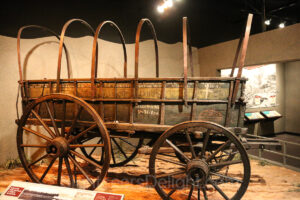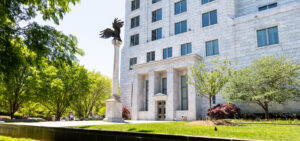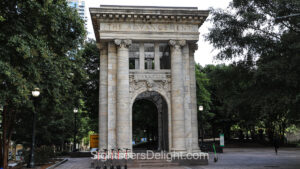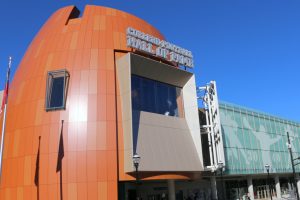54 Columns is a collection of 54 columns ranging from 10 to 20 feet tall. It was created in 1999 by Sol LeWitt, a minimalist artist. Known to some as Ghetto Stonehenge, the columns are supposed to resemble the Atlanta skyline. The art project was commissioned by the Fulton County Arts Council. In 2007, the Atlanta City Council designated the 210-acre Freedom Park, which is home to 54 Columns, as an Atlanta Public Art Project. LeWitt’s works can be seen in a number of museums nationwide, including the High Museum of Art in Atlanta. The Connecticut-born LeWitt died in 2007 at the age of 78.
30312
The Atlanta BeltLine is a 22-mile multi-use trail along a former railway corridor around the core of Atlanta. A Georgia Tech student proposed transforming the former rail corridor into a trail in a 1999 master’s degree thesis. The Atlanta BeltLine aims to reconnect neighborhoods and communities divided by infrastructure, improve transportation, add green space, promote redevelopment, create affordable housing, and showcase arts and culture. The BeltLine has opened in sections, including the Eastside, Westside and Northside trails.
The 30-acre garden is home to a number of exhibits, including an edible garden, a rose garden and rare orchid display. In 2010, the Atlanta Botanical Garden opened the Canopy Walk, a 600-foot-long walkway that towers 40 feet above the ground and gives visitors a chance to view a woodland garden from above.
30309
Located in the heart of Atlanta’s trendy Buckhead community, the Atlanta History Center was founded in 1926. The museum, which sits on a 33-acre campus, features six permanent exhibits and temporary exhibits. In addition to the main exhibits, the museum is also home to the historic Swan House, Tullie Smith Farm and Wood Family Cabin. The museum is home to one of the largest collections of Civil War artifacts in the United States.
30305
The Atlanta Monetary Museum at the Federal Reserve Bank of Atlanta in Midtown provides an interesting look into the history of currency. The museum’s collection includes a nice range of historic bills and coins. That includes $100,000 bills with President Woodrow Wilson and $10,000 bills with O’Hagel printed on them. It also has on display a rare set of coins from the former U.S. Mint in Dahlonega, Ga.
The Carnegie Education Pavilion, often called the Carnegie Monument, is a marble Beaux-Arts monument built in 1996 using the exterior facade of the Carnegie Library. From 1899 to 1901, steel magnate Andrew Carnegie donated $145,000 to build and supply a new public library in Atlanta at 126 Carnegie Way. New York architects Ackerman and Ross built the library, which opened in 1902. It was renovated in 1950 and 1966. The central library remained until it was demolished in 1977 to make way for the Marcel Breuer-designed Central Library.
30308
The 21-acre park, today a centerpiece of downtown Atlanta’s tourist district, was built as a central green space and remains a popular place for outdoor events. The park, which helped positively transform downtown Atlanta, is surrounded by some of the city’s biggest tourist destinations, including the Georgia Aquarium and CNN Center.
30313
Opened in 1965, the Clermont Lounge has the distinction as the first and longest continually operating strip club in Atlanta. The establishment is located in the basement of what was once the Clermont Motor Hotel. As Wikipedia notes: “The Clermont is perhaps best known for featuring some dancers who do not meet the traditional physical standards for strippers, the most famous of whom is Blondie, noted for her ability to crush empty beer cans between her breasts as well as for her poetry.”
The College Football Hall of Fame opened in Atlanta in August 2014 in Downtown Atlanta next to the Georgia World Congress Center and Centennial Olympic Park. The College Football Hall of Fame was previously located in South Bend, Ind. More than 975 players and more than 210 coaches have been enshrined in the College Football Hall of Fame. More than 300 schools are represented. The 94,256-square-foot facility includes exhibits, interactive displays, event space and a 45-yard indoor football field.
30313
The Delta Flight Museum was established in 1995 and opened publicly in June 2014. Located in a pair of 1940s-era maintenance hangars, the museum is home fleet of rare vintage aircraft and artifacts from more than 40 airlines related to Delta. Among the artifacts is the Spirit of Delta, Delta’s first Boeing 767. Employees, retirees, and friends purchased and donated the plane to Delta in 1982.
30354









